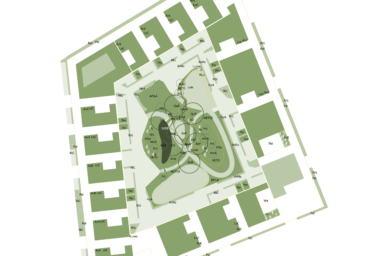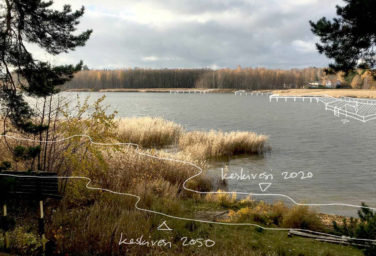Urban areas with high biodiversity are more resilient against disturbances.
Nature-based planning helps maintain and enhance ecosystem services and biodiversity, especially in urban and residential areas where people live and work. At its best, nature-based planning is a solution to multiple problems caused by intense land use and change by humans. With the help of nature-based solutions, we can simultaneously improve the well-being of humans and ecosystems, thereby promoting biodiversity.
Nature-based solutions integrate well with planning for environments characterized by equality and child-friendliness at all levels of urban greenery. In addition to intensively constructed urban areas, nature-based solutions also bring benefits to planning in more sparsely populated areas, such as small towns and rural conurbations.
Land use and construction contribute to climate change and biodiversity loss.
By building cities and urban areas, transportation networks and agriculture, humans have ended up with fragmented ecosystems and have eliminated a great of natural vegetation. Consequently, the total area, continuity and diversity of indigenous nature have decreased significantly. In order to address these issues, various regulations, recommendations and contracts have been implemented at the national and international levels. In the coming years, the amount and level of regulation aimed at controlling the impact of land use on nature will likely continue to increase.

Examples of our services for planning nature areas:
- Ecological surveys and assessments in urban areas (e.g. for sustainability certificates)
- Geospatial reviews of ecosystem services and blue-green structures
- Biotope surveys
- Consulting services of ecological compensatioon
- Biodiversity programs and strategies
While new nature conservation areas are important in preserving biodiversity, they cannot solve the current crisis on their own – especially when they are small and far apart from each other. In order to properly support biodiversity and ecosystem services in our environment, we also need a new approach and attitude in urban planning and design. A better future requires a new way of thinking.
Examples of our nature-based expertise in urban environments:
- Application and customization of the Green Factor method
- Strategies and directives for nature-positive planning
- Carbon-smart environmental design and life-cycle assessment
- Species-aided design

At Nomaji, we combine our expertise of nature with our know-how of practical land use and urban planning and design. In each of our projects, our goal is to identify the best possibilities for promoting biodiversity and the optimal way in which to integrate nature with the built environment. The nature-related services we provide can easily be adapted to the requirements of your project. For Nomaji, nature and biodiversity are always key to our services, but we will also consider the special needs of your site, such as particular species or groups of species.
Please contact us to find out more:







